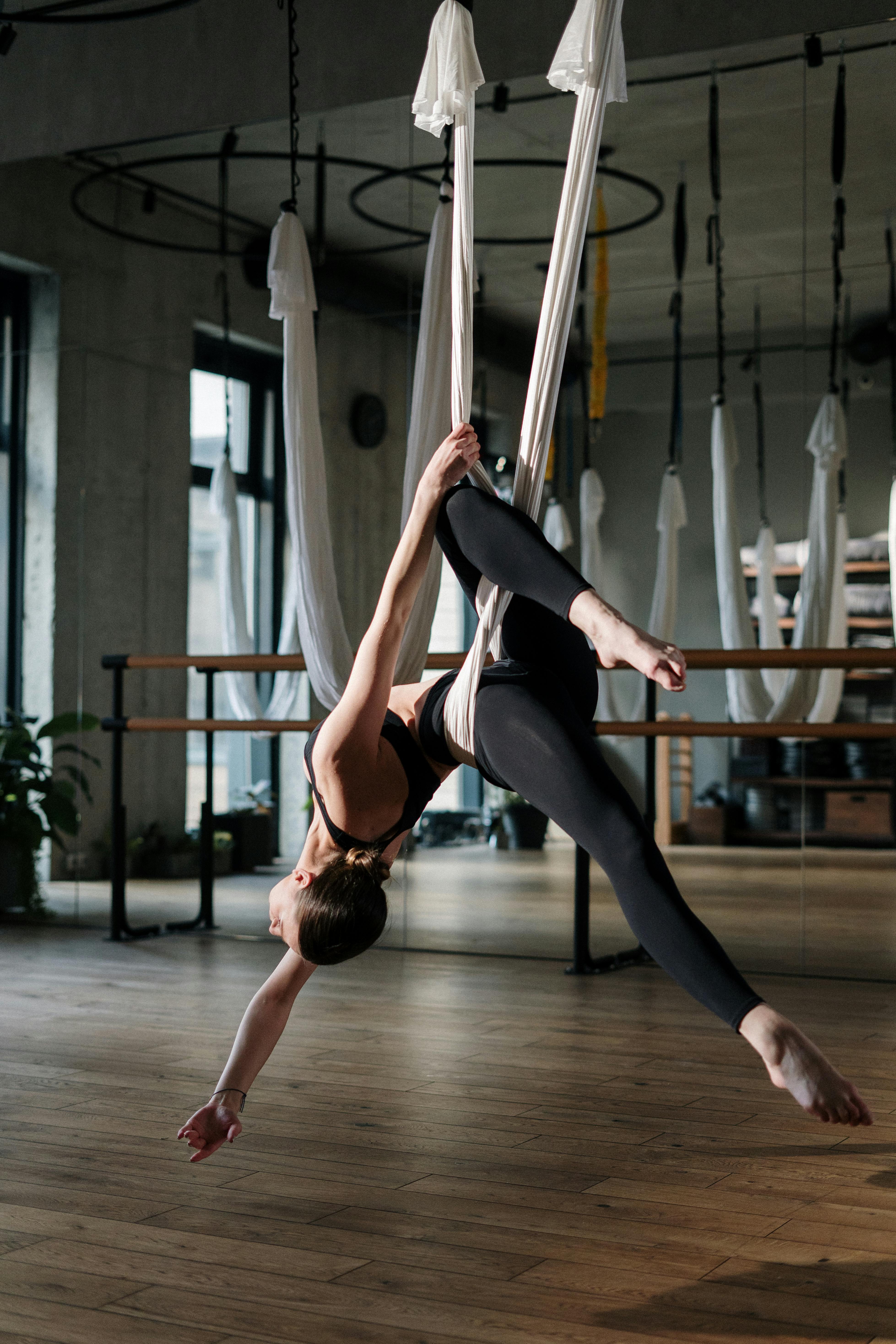Competitive Yoga: The Controversial New Frontier in Athletics
In a dimly lit studio, the air thick with tension, two yogis face off on adjacent mats. Their bodies contort into impossible shapes, muscles straining as they hold poses for minutes on end. This isn't your typical yoga class—it's the finals of a competitive yoga championship. As the judges scrutinize every movement, the participants push their bodies to the limit, blurring the line between ancient spiritual practice and modern athletic competition. Welcome to the world of competitive yoga, a rapidly growing phenomenon that's challenging traditional notions of both yoga and sport.

The Origins of Competitive Yoga
The concept of competitive yoga may seem like a recent development, but its roots can be traced back several decades. In the 1970s, the legendary yoga guru Bikram Choudhury began organizing yoga competitions in India, aiming to showcase the physical prowess and dedication of advanced practitioners. These early contests focused primarily on demonstrating mastery of challenging asanas (poses) and were seen as a way to inspire and motivate students.
However, it wasn’t until the early 2000s that competitive yoga began to gain significant traction on the global stage. In 2003, the USA Yoga Federation was established, formalizing the structure and rules for yoga competitions in the United States. This organization, along with similar bodies in other countries, began hosting regional and national championships, gradually building a framework for international competition.
The International Yoga Sports Federation (IYSF) was founded in 2009, further legitimizing competitive yoga as a global phenomenon. The IYSF has been instrumental in standardizing rules, training judges, and organizing world championship events. These developments have contributed to the rapid growth of competitive yoga, with participants from dozens of countries now vying for titles in various categories.
The Anatomy of a Yoga Competition
Competitive yoga events bear little resemblance to the serene atmosphere of a typical yoga studio. Participants, often clad in form-fitting attire, perform a series of poses before a panel of judges and an audience. The competition format usually consists of a compulsory round, where all competitors must execute a set of predetermined poses, followed by an optional round where they can showcase their most impressive and difficult asanas.
Judging criteria in competitive yoga are multifaceted and exacting. Competitors are evaluated on several key aspects:
-
Technical execution: The precision and alignment of each pose are scrutinized, with points deducted for even minor deviations from the ideal form.
-
Strength and flexibility: Judges assess the depth of stretches, the control demonstrated in balancing poses, and the overall physical prowess of the competitor.
-
Timing and control: Poses must be held for a specific duration, typically between 3 to 5 seconds, with points deducted for wobbling or premature exits.
-
Transitions: The grace and fluidity with which competitors move between poses are also evaluated.
-
Overall presentation: This includes factors such as poise, concentration, and the apparent ease with which difficult poses are executed.
Competitions typically feature various categories based on age, gender, and experience level. Some events also include group or pair performances, adding an element of synchronization and teamwork to the mix.
The Physical and Mental Demands of Competitive Yoga
While traditional yoga practice emphasizes the union of mind, body, and spirit, competitive yoga places a heightened focus on the physical aspects of the discipline. Competitors must develop extraordinary levels of strength, flexibility, and balance to execute the challenging sequences required in competition.
The physical demands of competitive yoga are comparable to those of elite gymnastics or figure skating. Practitioners often spend hours each day honing their skills, pushing their bodies to new limits of flexibility and control. This intense training regimen can lead to significant improvements in overall fitness, but it also carries risks of injury and burnout.
Mentally, competitive yoga requires a unique blend of focus, discipline, and performance skills. Competitors must maintain unwavering concentration while performing complex poses under the pressure of competition. The ability to remain calm and composed in front of judges and spectators is crucial, as even the slightest tremor or loss of balance can result in point deductions.
Many competitive yogis report that the mental challenges of the sport are as demanding as the physical ones. The pressure to perfect poses and outperform others can lead to anxiety and stress, which some argue is at odds with yoga’s traditional emphasis on inner peace and self-acceptance.
The Controversy Surrounding Competitive Yoga
The rise of competitive yoga has ignited passionate debates within the yoga community and beyond. Critics argue that turning yoga into a competitive sport fundamentally contradicts its core principles and spiritual roots. They contend that yoga is meant to be a personal journey of self-discovery and inner growth, not a platform for external validation or competition.
Purists worry that the focus on physical prowess in competitive yoga overshadows the holistic nature of traditional practice, which includes breath work, meditation, and ethical guidelines. They fear that the emphasis on difficult poses and perfect execution may discourage beginners or those with physical limitations from exploring yoga’s benefits.
Furthermore, some critics express concern about the potential for injury in competitive yoga. The pressure to perform extreme poses and push physical limits may lead practitioners to attempt postures they’re not ready for, risking serious harm.
On the other hand, proponents of competitive yoga argue that it can serve as a powerful motivator for practitioners to deepen their practice and strive for excellence. They contend that competition can inspire dedication and discipline, leading to significant personal growth both on and off the mat.
Supporters also point out that competitive yoga brings increased visibility to the practice, potentially attracting new enthusiasts who might not have considered yoga otherwise. They argue that as long as competitors maintain a mindful approach and respect the broader philosophy of yoga, competition can coexist with more traditional forms of practice.
The Global Impact and Future of Competitive Yoga
Despite the controversy, competitive yoga continues to grow in popularity around the world. National and international championships now attract thousands of participants and spectators, with events being held in countries as diverse as the United States, India, China, and Australia.
The increased visibility of competitive yoga has led to greater media coverage and public interest in the practice. This exposure has helped to challenge stereotypes about yoga, showcasing its potential as a physically demanding discipline that requires extraordinary skill and dedication.
As competitive yoga evolves, efforts are being made to address some of the criticisms leveled against it. Some organizations are incorporating more traditional elements of yoga into their events, such as breath work and meditation components. There’s also a growing emphasis on promoting safe practice and injury prevention among competitors.
Looking to the future, some proponents of competitive yoga harbor Olympic aspirations. While inclusion in the Olympic Games remains a distant goal, the sport’s growing popularity and increasingly standardized format make it a potential candidate for consideration in the coming decades.
The Balancing Act: Reconciling Competition and Tradition
As competitive yoga continues to carve out its place in the world of sports, the yoga community faces the challenge of reconciling this new frontier with the ancient practice’s traditional values. Many practitioners and teachers are exploring ways to embrace the benefits of competition while staying true to yoga’s core principles.
One approach gaining traction is the concept of “conscious competition.” This philosophy encourages competitors to view their participation as a form of self-study and personal growth rather than a quest for external validation. By maintaining mindfulness and a spirit of non-attachment to outcomes, practitioners aim to compete in a way that aligns more closely with yoga’s traditional teachings.
Some yoga schools and studios are incorporating elements of competitive yoga into their curricula, not as a replacement for traditional practice, but as a complementary tool for motivated students. This integration allows practitioners to explore the physical limits of their practice while still engaging with yoga’s spiritual and philosophical aspects.
The Role of Technology in Competitive Yoga
As competitive yoga evolves, technology is playing an increasingly significant role in both training and competition. Advanced motion capture systems and biomechanical analysis tools are being used to help competitors refine their technique and achieve perfect alignment in challenging poses.
Virtual reality and augmented reality technologies are also making their way into the competitive yoga world. These tools allow practitioners to visualize and practice complex sequences in immersive environments, potentially reducing the risk of injury during training.
In competitions, high-speed cameras and instant replay systems are being employed to assist judges in making accurate assessments. This technology helps to ensure fairness and transparency in scoring, addressing concerns about subjectivity in judging.
Social media and online platforms have also become integral to the growth of competitive yoga. Competitors use these channels to share training tips, showcase their skills, and build communities of like-minded practitioners. This online presence has helped to raise the profile of competitive yoga and attract a new generation of enthusiasts.
The Impact on Yoga Education and Teacher Training
The rise of competitive yoga is influencing yoga education and teacher training programs worldwide. Many schools now offer specialized courses in advanced asana practice and competition preparation, catering to students interested in pursuing competitive yoga.
This shift has led to debates about the role of advanced poses in yoga teacher training. Some argue that a greater emphasis on physical mastery can enhance a teacher’s ability to guide students safely through challenging sequences. Others contend that this focus detracts from the holistic approach traditionally emphasized in yoga education.
As a result, many teacher training programs are evolving to strike a balance between traditional yoga philosophy and the physical demands of modern practice, including competitive elements. This integration aims to produce well-rounded teachers who can cater to a diverse range of students, from those seeking spiritual growth to those interested in pushing their physical limits.
The Intersection of Competitive Yoga and Sports Science
The growth of competitive yoga has attracted the attention of sports scientists and researchers. Studies are being conducted to analyze the biomechanics of advanced yoga poses, the physiological effects of intense practice, and the potential applications of yoga techniques in other sports.
This scientific scrutiny is leading to a deeper understanding of the physical benefits and risks associated with advanced yoga practice. Researchers are exploring topics such as the impact of extreme flexibility on joint health, the cardiovascular effects of holding challenging poses, and the role of breath control in enhancing performance.
The findings from these studies are not only informing competitive yoga training methods but also contributing to broader discussions about the role of yoga in sports medicine and athletic performance enhancement. As a result, competitive yoga is serving as a bridge between the ancient practice and modern sports science, potentially benefiting practitioners across various disciplines.
Ethical Considerations in Competitive Yoga
As competitive yoga gains prominence, ethical questions are coming to the forefront. Issues such as body image, the commercialization of yoga, and the potential exploitation of practitioners are being debated within the community.
There are concerns about the impact of competition on body image and self-esteem, particularly among younger practitioners. Critics argue that the emphasis on physical perfection in competitive yoga can perpetuate unrealistic beauty standards and contribute to body dysmorphia.
The commercialization of competitive yoga is another contentious issue. As the sport attracts sponsors and media attention, some worry that the spiritual essence of yoga may be compromised in pursuit of financial gain.
To address these concerns, many competitive yoga organizations are developing ethical guidelines and codes of conduct. These frameworks aim to ensure that competitions are conducted in a manner that respects the integrity of yoga practice and protects the well-being of participants.
Cultural Appropriation and Representation in Competitive Yoga
The globalization of competitive yoga has raised questions about cultural appropriation and authentic representation. As the sport gains popularity in Western countries, there are debates about how to honor yoga’s Indian roots while allowing for its evolution in new cultural contexts.
Some argue that competitive yoga, with its focus on physical prowess and Western-style sport structure, represents a form of cultural appropriation that strips yoga of its spiritual and philosophical foundations. Others contend that the sport can serve as a bridge between cultures, promoting cross-cultural understanding and appreciation.
Efforts are being made to address these concerns by incorporating more diverse voices in the leadership of competitive yoga organizations and ensuring that the historical and cultural context of yoga is acknowledged in competitions and training programs.
The Environmental Impact of Competitive Yoga Events
As competitive yoga events grow in scale and frequency, their environmental impact is coming under scrutiny. Large gatherings of participants and spectators can lead to increased carbon emissions, waste generation, and resource consumption.
In response, many competitive yoga organizations are adopting sustainable practices for their events. These initiatives include using eco-friendly mats and equipment, implementing waste reduction strategies, and encouraging participants to offset their travel-related carbon emissions.
Some competitions are even incorporating environmental awareness into their judging criteria, rewarding participants who demonstrate a commitment to sustainability in their practice and lifestyle.
Competitive Yoga and Gender Equality
Competitive yoga has the potential to challenge gender stereotypes in sports. Unlike many traditional athletic disciplines, yoga competitions often feature men and women competing on an equal footing, with categories based on age and experience rather than gender.
This gender-inclusive approach is helping to break down barriers and promote equality in sports. It’s providing opportunities for athletes of all genders to showcase their skills and gain recognition based on their abilities rather than their gender identity.
However, challenges remain. There are ongoing discussions about how to ensure fair competition for non-binary and transgender athletes, as well as how to address gender-based disparities in participation and recognition within the competitive yoga community.
The Role of Competitive Yoga in Youth Development
As competitive yoga gains popularity, it’s increasingly being introduced to younger practitioners. This trend has sparked debates about the appropriateness of competition for children and adolescents in a practice traditionally associated with inner peace and self-acceptance.
Proponents argue that competitive yoga can instill discipline, promote physical fitness, and boost self-confidence in young people. They contend that when approached mindfully, competition can be a powerful tool for personal growth and character development.
Critics, however, worry about the potential negative impacts on children’s body image, self-esteem, and overall relationship with yoga. There are concerns that the pressure to perform and win may overshadow the more holistic benefits of yoga practice.
In response to these concerns, many youth competitive yoga programs are adopting modified formats that emphasize participation, personal improvement, and the cultivation of positive values over winning at all costs.
Competitive Yoga and Mental Health
The relationship between competitive yoga and mental health is complex and multifaceted. On one hand, the discipline and focus required in competitive yoga can promote mindfulness, stress reduction, and improved emotional regulation. Many competitors report experiencing a state of flow during practice and competition, leading to increased well-being and life satisfaction.
On the other hand, the pressure to perform and the emphasis on physical perfection can potentially exacerbate anxiety, perfectionism, and negative self-image. The competitive environment may also conflict with yoga’s traditional role as a tool for managing stress and promoting inner peace.
Mental health professionals and yoga therapists are increasingly involved in the competitive yoga world, offering support and guidance to help practitioners navigate these challenges. Many competitive yoga organizations are also incorporating mental health resources and education into their programs, recognizing the importance of holistic well-being in athletic performance.
The Economic Impact of Competitive Yoga
As competitive yoga grows, it’s creating new economic opportunities within the broader yoga industry. From specialized training programs and equipment to event organization and media coverage, the sport is generating revenue streams that didn’t exist a decade ago.
This economic growth is providing new career paths for yoga practitioners, from professional competitors to coaches, judges, and event organizers. It’s also attracting investment in yoga-related businesses and technologies, further fueling the industry’s expansion.
However, the commercialization of yoga through competition raises questions about accessibility and inclusivity. There are concerns that the focus on high-level competition may create financial barriers to participation, potentially excluding practitioners from less privileged backgrounds.
Competitive Yoga and Community Building
Despite the inherently individual nature of yoga competition, the sport has fostered the development of strong, supportive communities. Competitors often form close bonds, sharing training tips, offering encouragement, and celebrating each other’s achievements.
These communities extend beyond national borders, with international competitions serving as gathering points for practitioners from diverse cultural backgrounds. This global network is facilitating cross-cultural exchange and fostering a sense of unity within the worldwide yoga community.
Many competitive yoga events now include community outreach programs, using the platform to promote yoga’s benefits to wider audiences and support charitable causes. These initiatives are helping to balance the competitive aspect of the sport with yoga’s traditional emphasis on service and compassion.
The Future of Competitive Yoga: Trends and Predictions
As competitive yoga continues to evolve, several trends are emerging that may shape its future:
-
Increased integration of technology: Virtual and augmented reality tools may become more prevalent in training and competition, offering new ways to visualize and perfect poses.
-
Emphasis on sustainability: Future competitions may place greater emphasis on eco-friendly practices and environmental awareness.
-
Diversification of competition formats: New categories and judging criteria may be introduced to reflect a more holistic approach to yoga practice.
-
Greater scientific scrutiny: Ongoing research may lead to more evidence-based training methods and a deeper understanding of the physical and mental effects of competitive yoga.
-
Expansion into new markets: As the sport gains global recognition, it may find footholds in regions where yoga is less established.
-
Potential Olympic recognition: While still a distant goal, continued growth and standardization may eventually lead to consideration for Olympic inclusion.
As competitive yoga navigates these trends, it will likely continue to challenge our perceptions of both yoga and sport, inviting us to reconsider the boundaries between ancient wisdom and modern athleticism.
Conclusion: The Ongoing Evolution of Yoga in the Modern World
Competitive yoga stands as a testament to the ever-evolving nature of yoga practice. It represents a bold reimagining of an ancient discipline, one that has sparked both enthusiasm and controversy within the global yoga community.
As the sport continues to grow and develop, it faces the ongoing challenge of balancing the physical demands of competition with the spiritual and philosophical foundations of yoga. The future of competitive yoga will likely be shaped by its





